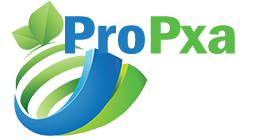The remote patient monitoring (RPM) system is used to continuously monitor patient-related activities such as pulse rate, heart rate, blood pressure, and body temperature. These tools help examine chronic disorders as well. One of the most significant developments in healthcare is the ability of medical personnel to assess patients from distant areas. Patients can use mobile medical devices to conduct routine tests, and they can easily communicate the test results to the appropriate healthcare surgeon using cell phones or computers.
The market for remote patient monitoring devices in 2021 was worth USD 1.45 billion, and by 2030 it will be worth USD 4.07 billion, growing at an 8.74% CAGR during the forecast period.
The market is driven due to increasing efforts made by healthcare facilities to include RPM devices in their treatment plans. Hospital admissions have been steadily rising, placing a strain on healthcare facilities because there may not be enough staff to monitor and care for all the patients who have been hospitalized.
Market Dynamics
Drivers
The remote patient monitoring devices market will grow significantly due to the increased prevalence of ailments, including heart problems, respiratory disorders, and other conditions. In 2019, cardiovascular illnesses were responsible for 32% of all fatalities globally, killing an estimated 17.9 million people, according to a World Health Organization research published in June 2021. 85% of these fatalities globally were caused by heart attacks & strokes, and 38% of the 17 million premature fatalities (deaths before the age of 70) caused by non-communicable diseases worldwide in 2019 were attributable to cardiovascular diseases.
Restraints
Healthcare fraud is a critical element in telehealth and telemedicine operations. There are numerous methods to hurt a patient or a medical professional. For instance, institutional providers who are ineligible or not on the list may use improper coding and billing to submit false claims, or the identity and account of the doctor may be utilize to get money from the insurance company.
Opportunity
This might lead to a rise in remote patient monitoring and industrial expansion.
Market Segmentation
By Product
On the basis of product, the market is segment into special monitors and vital sign monitors.
In the year 2022, the special monitor segment held the maximum position in the market, with a revenue share of nearly 82.75%. The largest share of this segment is due to its capability to track clinically significant data before and after surgery, recognize symptoms, and avoid complications. Advanced features, like wireless connection and iPad compatibility, enable early diagnosis and broaden the product’s applicability.
By Application
In terms of application, the remote patient monitoring devices market is segmented into sleep disorders, cancer, diabetes, infections, weight management & fitness monitoring, hypertension, dehydration, virus, and bronchitis.
Diabetes was one of the largest market segment, with a revenue share of 13% in 2022. Diabetes is a prominent cause of death globally that requires continuous tracking of blood glucose levels. It affects numerous functions of the body, such as vision, heart activity, renal activity, and liver function. As a result, routine and continuous monitoring is need, which can be conveniently done with the help of RPM devices.
Over the forecast period, the hypertension segment will rise significantly. Cardiovascular disorders mostly occur due to hypertension. Over 1 billion individuals suffer from hypertension globally, according to the World Health Organization (WHO).
By End-use
In terms of end-user, the market is segment into homecare, hospital-based patients, and ambulatory patients.
In 2022, the hospital segment was the largest market contributor, with 80.3% of the revenue share. Hospitals have a larger technical staff and a wide range of diagnostic tests available to meet the needs of the patients. A huge patient base and an increase in tests being run are key factors in the segment’s growth. However, alternate site monitoring, particularly home healthcare, will show a strong CAGR throughout the forecast period.
Regional Analysis
North America held maximum position in the market with 41.45% of the revenue share in 2022. The main causes of the regional market growth are the rise in the prevalence of chronic diseases, the need for wireless and portable systems, and the availability of complex reimbursement schemes designed to reduce out-of-pocket expenses.
Asia Pacific region will experience the quickest CAGR throughout the projection period due to the existence of unexplored potential in the rising markets of India and China. Japan will be a significant source of revenue because of its large elderly population.
Key Players
- Cerner Corporation
- Smiths Medical
- Hoffmann-La Roche Ltd
- Shenzhen Mindray Bio-Medical Electronics Co., Ltd.
- Koninklijke Philips N.V.
- Welch Ally
- Nihon Kohden Corporation
- Omron Corporation
- Boston Scientific Corporation
- GE Healthcare
- American Telecare
- OSI Systems, Inc.
- Dräger Medical
- Johnson & Johnson
- Vitls, Inc
- Masimo
- Abbott
- Biotronik
- CareValidate
- LifeWatch
- Honeywell
The market for remote patient monitoring devices in 2021 was worth USD 1.45 billion, and by 2030 it will be worth USD 4.07 billion, growing at an 8.74% CAGR during the forecast period. The rising incidence of chronic disorders, the desire to reduce healthcare expenses, and the rapidly expanding geriatric population will boost the market growth of remote patient monitoring devices.
Related Reports:
Carbon Black Market Report – The global carbon black market will witness a robust CAGR of 5.5%, valued at $13.45 billion in 2021, expected to appreciate and reach $21.85 billion by 2030, confirms Strategic Market Research. Asia-Pacific accounted for a sizeable market share of over 55 % in 2021.




















